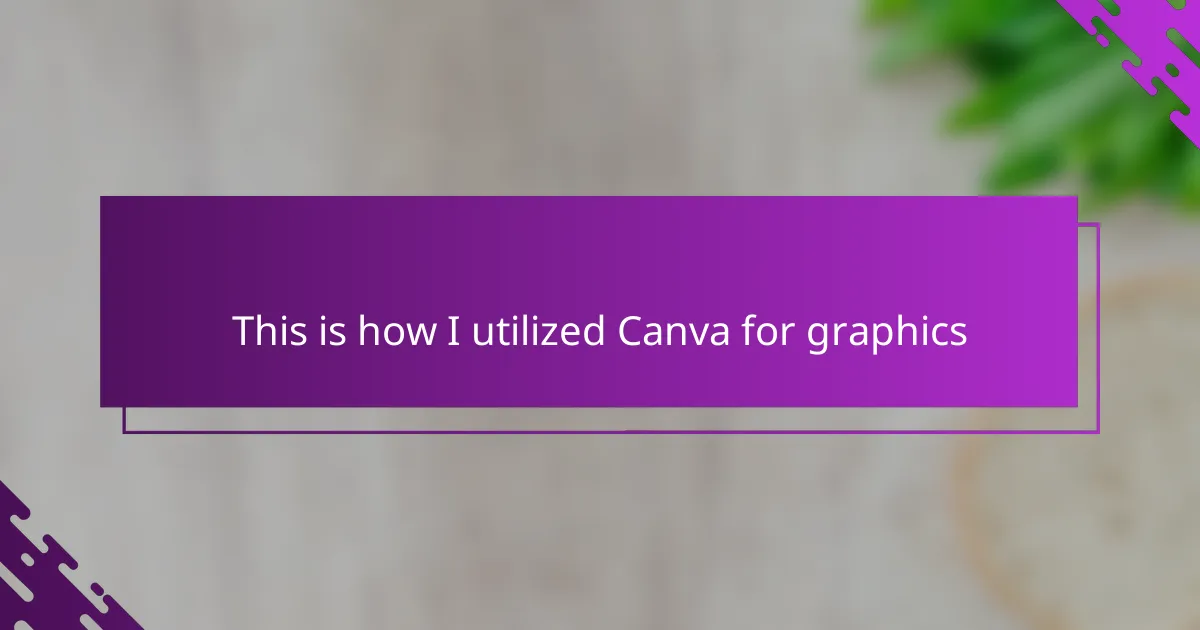Key takeaways
- Canva’s user-friendly interface simplifies graphic design for bloggers, enabling creativity even without prior skills.
- Consistency in branding can be achieved through personalized templates and thoughtful color choices, enhancing reader engagement.
- Step-by-step design processes, such as using layering and balancing elements, can elevate graphics from good to great.
- Regular evaluation and feedback from peers can significantly improve design skills and overall effectiveness of visuals.

Understanding Canva for Blogging
When I first dove into blogging, the idea of creating eye-catching graphics felt overwhelming. Canva quickly shifted that feeling for me—its user-friendly interface made designing approachable, even for someone with zero graphic design skills. Have you ever stared at a blank screen, unsure how to make your blog posts visually appealing? That’s exactly where Canva stepped in for me.
One thing I realized is that understanding Canva isn’t just about mastering tools but about exploring what sparks creativity. For example, playing around with templates helped me discover my own style, which made my blog feel authentic and inviting. It’s amazing how simple tweaks to colors and fonts can set the tone for your entire post.
Also, Canva taught me the importance of consistency in branding. Having templates saved saved me tons of time and kept my posts looking polished without feeling repetitive. It made me appreciate how visual identity influences readers’ trust and engagement—something I hadn’t fully considered before. Would you have believed that the right graphic could make your content feel more “you”?
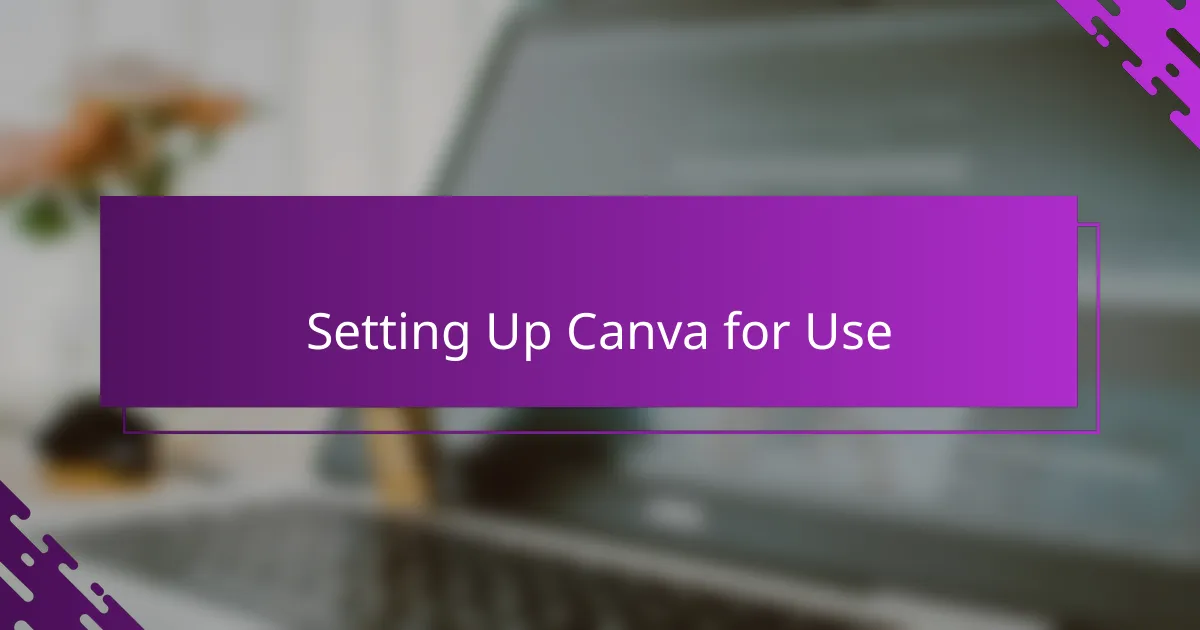
Setting Up Canva for Use
Setting up Canva was surprisingly simple for me. I started by creating a free account, which took just a minute, and immediately I was welcomed with a clean dashboard that didn’t intimidate me. Have you ever signed up for a tool only to feel lost right away? Canva avoided that pitfall completely.
Next, I explored the basic settings to tailor the workspace to my style. Uploading my blog’s logo and choosing a color palette felt like giving Canva a personal touch, making it easier to stay consistent across all my graphics. It was a small step but one that saved me from repetitive adjustments later.
I also made sure to organize my favorite templates and design elements into folders. That little habit turned into a huge time-saver because I could quickly grab what I needed without scrolling endlessly. I found that this setup phase wasn’t just technical—it shaped how smoothly my creative process flowed.
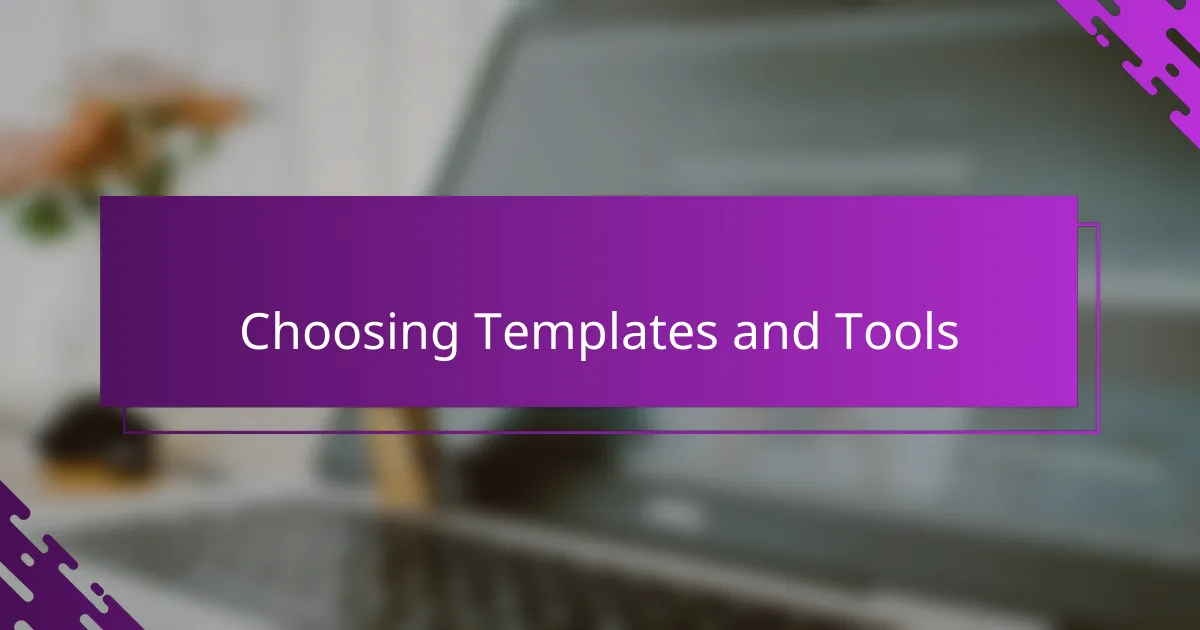
Choosing Templates and Tools
Choosing templates in Canva felt like unlocking a treasure chest for me. I remember how overwhelming it was at first to find a design that matched my blog’s vibe. But once I started experimenting with different categories—from minimalist to vibrant—I quickly realized how customizable they were, allowing me to inject my personality without starting from scratch. Have you ever felt stuck facing a blank canvas? These templates acted as a helpful nudge that got my creativity flowing.
When it came to tools, I leaned heavily on Canva’s drag-and-drop features. Honestly, being able to easily resize, swap images, or change fonts in just a few clicks made all the difference. There was one time I was rushing to finish a post, and that simplicity saved me from stress because I didn’t have to wrestle with complicated software. That ease of use made me feel confident in my design decisions, even on tight deadlines.
I also discovered the value of layering elements like shapes, icons, and text boxes to create more dynamic visuals. Instead of settling for a flat look, playing with these tools let me build graphics that felt alive and tailored to my content. It made me wonder—why would I ever go back to plain text? This hands-on approach transformed my posts from simple stories into engaging experiences.
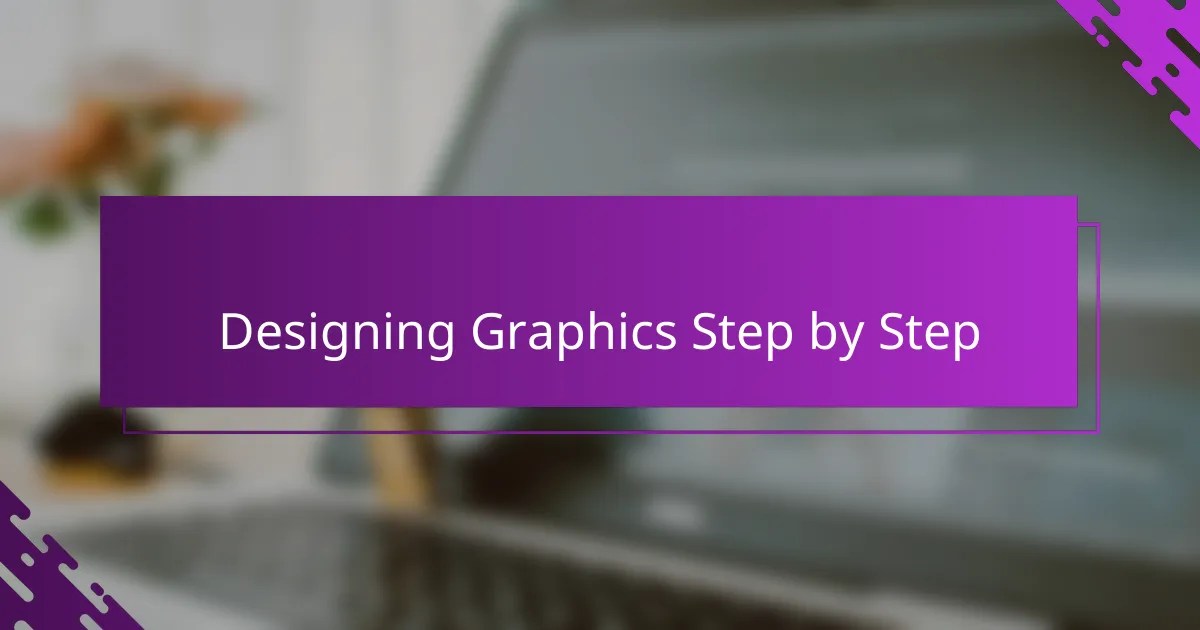
Designing Graphics Step by Step
Once I decided on a template, I tackled the design step by step, starting with the background. Changing colors to match my blog’s theme felt like setting the mood for the entire piece. Have you noticed how the right shade can instantly make your graphic feel cozy or energetic? For me, this small adjustment was like laying the foundation before building a house.
Next came adding and arranging elements. I played around with text boxes and icons, moving them until they felt balanced—sometimes spending more time than I expected! There was this one design where I kept resizing and repositioning until the headline popped just right. It made me realize that patience matters; little tweaks can turn a decent graphic into something memorable.
Finally, I always reviewed my work through the “preview” mode. Seeing the design as a whole helped me catch inconsistencies I hadn’t noticed up close. Asking myself, “Does this reflect my blog’s voice?” became a critical checkpoint. This step often revealed simple fixes that elevated the graphic from good to great, making the whole process feel rewarding.

Incorporating Graphics Into Posts
Incorporating graphics into my posts completely changed how readers interacted with my content. I noticed that a well-placed image or a custom-designed banner grabbed attention immediately, making people linger longer. Have you ever scrolled past a wall of text just because it felt too dense? That’s where Canva’s visuals became my secret weapon to break up the monotony.
I also found that including graphics wasn’t just about decoration—it helped clarify my points. For instance, using simple icons or charts made complex ideas easier to digest, which felt great because I’m all about keeping things reader-friendly. When I added a bold header graphic, it acted like a welcome mat, inviting readers to dive deeper into the topic.
Sometimes, I wondered how much was too much. Would adding too many images distract rather than enhance? Through trial and error, I learned that balance matters most. One image per major section usually does the trick, giving the post a clean, professional look without overwhelming my audience. It’s like seasoning a dish; just enough to highlight the flavors without overpowering them.
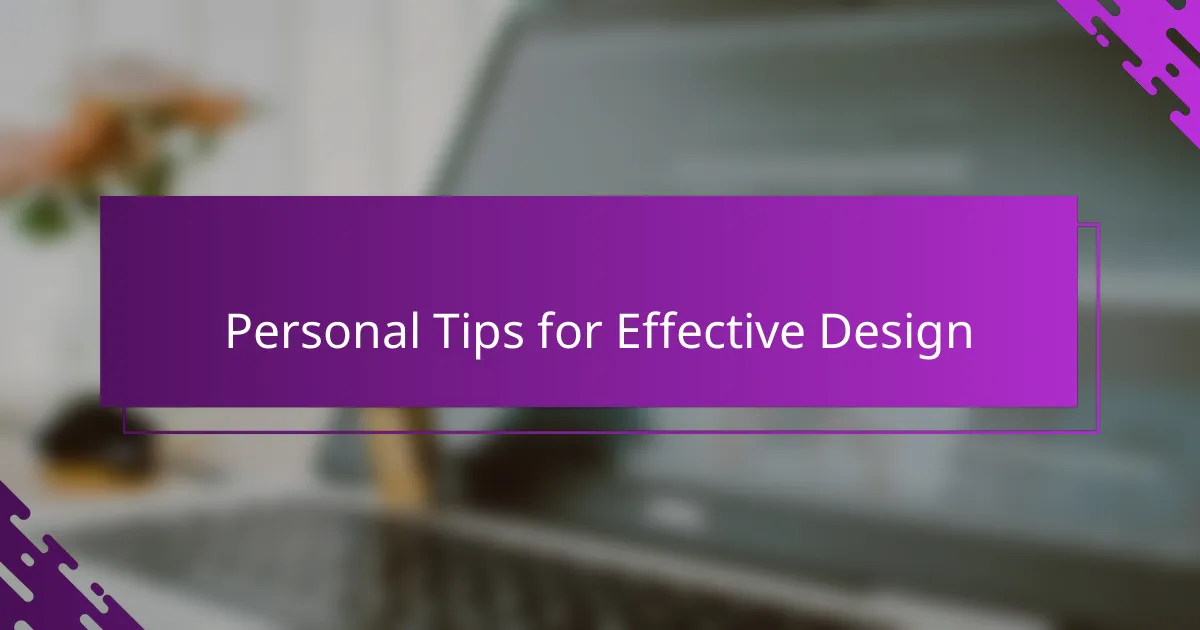
Personal Tips for Effective Design
Good design, I’ve found, often comes down to simplicity. When I first started, I tried to cram every cool element into one graphic—big mistake. Have you ever looked at something and thought, “This is just too much”? Learning to step back and choose just a few key elements made my designs breathe and actually speak to my readers.
Color choices are another area where I gained confidence over time. I used to pick colors randomly, but then I realized how much mood they set. For example, switching from harsh reds to softer blues instantly made my graphics feel inviting rather than overwhelming. Have you noticed how colors can change the vibe of your content before anyone even reads a word?
Finally, alignment and spacing might sound basic, but they’re game changers. I remember spending ages tweaking text placement, wondering if it really mattered. Turns out, those little shifts made my layouts look professional and polished—something I wasn’t expecting. Does perfect alignment matter? From what I’ve seen, it absolutely does.

Evaluating and Improving Design Skills
Evaluating my design skills felt like looking in a mirror that occasionally showed me just how much room I had to grow. I kept asking myself, “Is this graphic really communicating what I want?” Sometimes the answer was a hesitant no, pushing me to revisit and refine until the message felt spot-on. It’s a humbling process but one that made me appreciate the subtle art behind every visual choice.
Improving those skills, for me, came down to practice and honest feedback. I started sharing my designs with friends and other bloggers, wondering if they noticed the clutter or if the colors clashed. Their insights opened my eyes to details I’d overlooked, reminding me that design is as much about how others perceive it as how it feels to me. Have you ever had a trusted critique completely change your perspective? That experience is invaluable.
I also found that setting small, focused goals helped me progress without feeling overwhelmed. Instead of trying to master every Canva feature at once, I chose to improve one aspect—like typography or balance—over a week. This bit-by-bit approach made learning enjoyable and less intimidating, turning my design practice into a creative habit rather than a daunting chore. Does breaking big goals into bite-sized tasks make growth easier for you too? It certainly worked for me.
